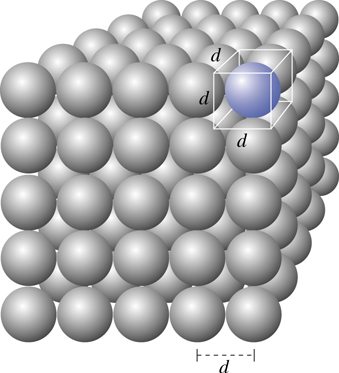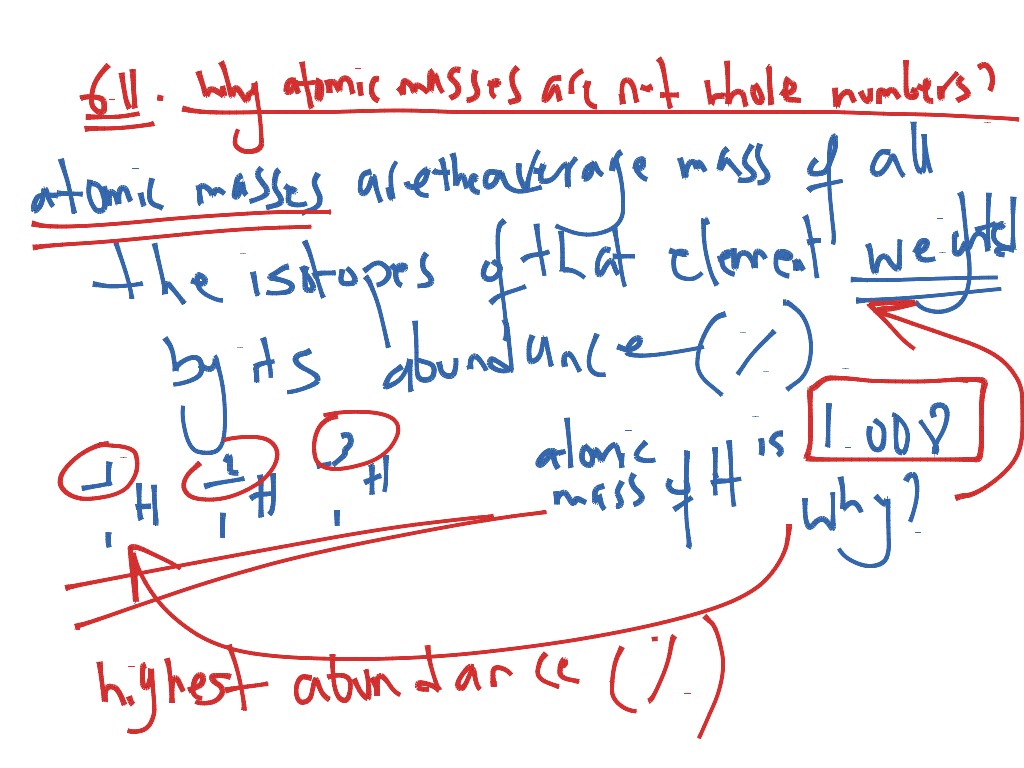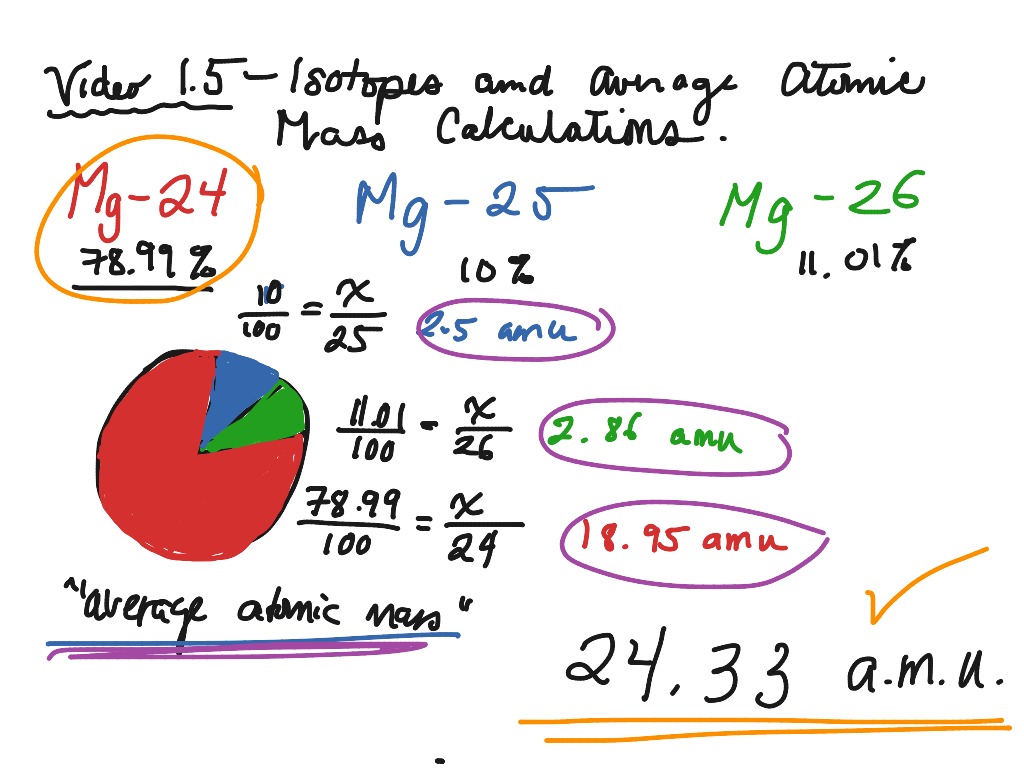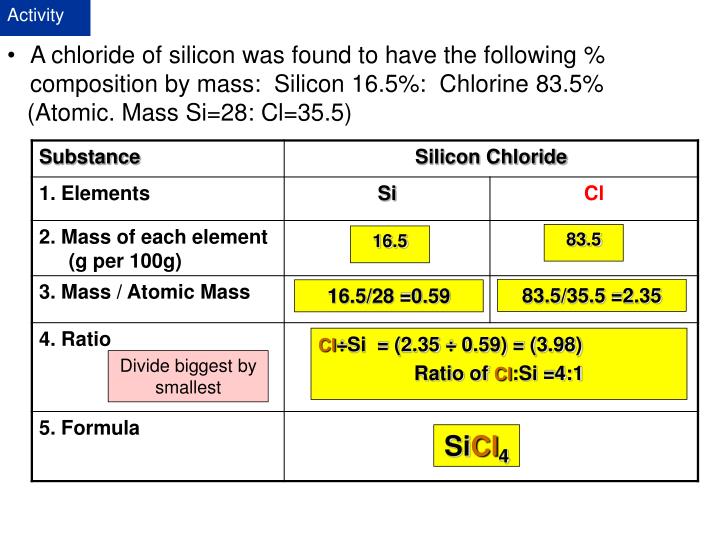
Let x = isotopic abundance of Si-29 (as a decimal) Given that the observed atomic mass of silicon is 28.0855 calculate the percentages of Si-29 and Si-30 in nature. The most abundant isotope is Si-28 which accounts for 92.23% of naturally occurring silicon. Problem #3b: Naturally occurring silicon consists of 3 isotopes, Si-28, Si-29 and Si-30, whose atomic masses are 27.9769, 28.9765 and 29.9738 respectively. You can find the answers to Problem #3 here. Note: isotopic abundances of the elements are well-known values. Then simplify it, substitute into the first equation and solve. Let y = isotopic abundance of Si-30 (as a decimal) Let x = isotopic abundance of Si-28 (as a decimal) If the atomic mass of silicon is 28.0855 and the natural abundance of Si-29 is 4.67%, what are the natural abundances of Si-28 and Si-30?ġ) Set up a system of two equations in two unknowns: X = 0.7576 (the decimal abundance for Cl-35)

Given chlorine's atomic weight of 35.453 amu, what is the percent abundance of each isotope? Problem #2b: Chlorine is made up of two isotopes, Cl-35 (34.969 amu) and Cl-37 (36.966 amu). We simply went right to y = 1 − x and substitued it immediately without ever writing down the second equation required. I hope it's obvious why you wouldn't do this with an element that has only one stable isotope!īy the way, the 'trick' works because the other equation required is: If you have three or more, there are too many variables and not enough equations. Note that this calculation technique works only with two isotopes. X = 0.6915 (the decimal abundance for Cu-63) Once again, notice that 'x' and 'one minus x' add up to one. Given copper's atomic weight of 63.546, what is the percent abundance of each isotope? So, use 42 and 44 in the solution to the problem. Calculate the abundances if the atomic weight is 42.68." Since ChemTeamium doesn't exist, you can't look up exact isotopic weights. For example: "ChemTeam-42 and ChemTeamium-44 exist. You may want to compare them to the more exact abundances which are in the equation set up at the top of the page.Ĭomment Two: only the mass numbers may be given if the element is a made-up one. The consequence of using 14 and 15 rather than the exact values is that we will get slightly approximate answers for the two abundances. Please notice that the mass numbers (14 and 15) are quite close to the exact values. I advise you to ask your instructor what the question wants you to do if only the mass numbers are provided in the problem.

However, in this Internet era, it is easy to look up the values on-line. The two abundances always add up to one (or, if you prefer, 100%)Ĭomment One (see end of problem for another comment): sometimes the exact weights of the isotopes are not provided in the problem. Notice that the abundance of N-14 is assigned 'x' and the N-15 is 'one minus x.' This is the "trick" refered to above. Given nitrogen's atomic weight of 14.007, what is the percent abundance of each isotope? Problem #1: Nitrogen is made up of two isotopes, N-14 and N-15. I'll show how using the above nitrogen example. So, the trick is to express both abundances using only one unknown. That's right, they add up to 100% (or, since we use decimal abundances in the calculation, 1.00). Think about the sum of the percent abundances of the TWO isotopes. You would be right, except that there is a trick. However, you might protest that we have two unknowns, but only one equation. In this tutorial, the unknown values calculated are the TWO percent abundances.

In the other tutorial, the average atomic weight is the unknown value calculated. (exact weight of isotope #1) (abundance of isotope #1) + (exact weight of isotope #2) (abundance of isotope #2) = average atomic weight of the element

Let's start by repeating the solution for nitrogen from the Average Atomic Weight tutorial: Calculate the isotopic abundances from the average atomic aeight and isotopic weights Calculate the isotopic abundances when given the average atomic weight and the isotopic weightsĬalculate the average atomic weight when given isotopic weights and abundances


 0 kommentar(er)
0 kommentar(er)
